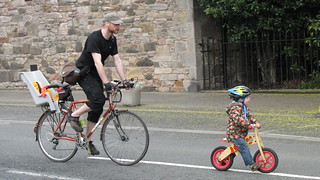An interesting question around there being "no space", and apologies if this or has been done to death on an old thread that I couldn't find...
I was having an argument with the other half the other day about having proper infra on arterial routes. She had the classic attitude that you couldn't possibly reduce road capacity on some arterial routes or there would be gridlock. I did point out that these arterial routes are where people want to go between homes and work, so we should be facilitating cycling as far as possible on these.
So my question for Edinburgh would be - of the main arterial routes into the city centre, are there any that really wouldn't make sense or be viable for provision of segregated infra?
For key arteries I'm thinking Queensferry Road, Glasgow Road, Slateford Road (A70), Morningside Road, Newington Road & a route from Cameron Toll to edge of city, Niddrie/Craigmillar Rd, London Rd, Leith Walk.
Case in point - our "discussion" was on Newington Road. The better half claimed that you couldn't possibly have segregation on that road because 2 lanes are needed each way and without it there would be mayhem... Even ignoring the fact there are 3 parallel streets, personally I'd have thought this would be much easier than the likes of Morningside which is actually quite narrow and congested.
Of course this also omits the fact that we already have the world class facility in the QBC...
Assuming the money was available, which routes do we think would be viable or not, and in a realistic but ideal world what would we want to see?

 posts
posts
